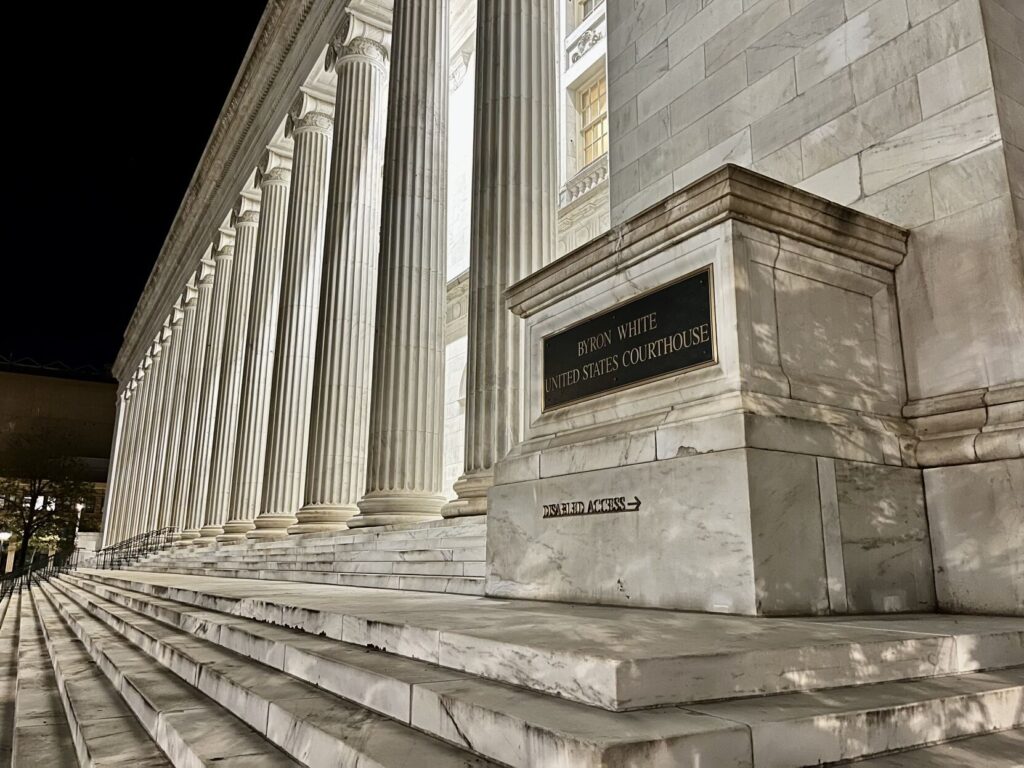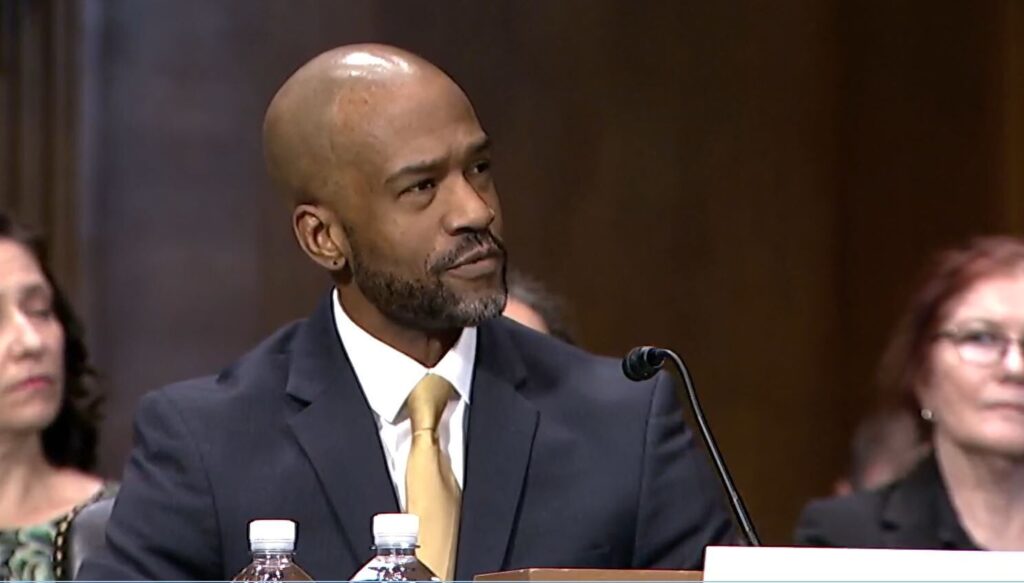Heavy docket: Study recommends Colorado’s second-highest court expand by 25% to handle workload | COVER STORY
In the past two years, Chief Judge Gilbert M. Román has presided over five swearing-in ceremonies for new judges on Colorado’s second-highest court. He has repeatedly opened with the same disclaimer about the 22-member Court of Appeals.
“This is considered a heavy-docket court,” Román says.
Numerically speaking, that amounted to 1,745 written opinions issued in the last fiscal year. But for Karen M. Ashby, a judge on the court between 2013 and 2019, the work resembled the famous scene from “I Love Lucy,” in which Lucy and Ethel struggle to wrap chocolates that arrive on a fast-moving conveyor belt.
“It wasn’t that it was impossible to keep up,” she said. “But it was a reflection of the unending nature of the job in terms of cases just kept coming.”
Last summer, a report commissioned by the judicial branch illustrated how pressed the judges and staff are. The National Center for State Courts conducted a study of the court’s workload and recommended adding at least six judgeships — and perhaps as many as nine.
The legislature last authorized an increase to the court’s size over 15 years ago, boosting the number of judges from 19 to 22 starting in 2008. That year, the Court of Appeals issued slightly more opinions than it currently does.

DENVER, CO – OCTOBER 26: Judges John Daniel Dailey, left, W. Eric Kuhn, and Stephanie E. Dunn, right, enter the courtroom to hear arguments on October 26, 2021 in Denver, Colorado. (Photo By Kathryn Scott)
However, even if the raw numbers have remained roughly constant, there are other factors affecting the court’s workload and the output of its members.
“The COA workload has been impacted by the rising number of appeals and the increased complexity of the cases being heard before the court since the last expansion of the court in 2008,” the report noted. “Judges at the COA have responded to this increased workload by working in excess of the standard expected work-year.”
In free responses, presented anonymously in the report, judges cautioned that their other professional duties — continuing education, public outreach — either took a backseat to casework or pushed their opinion-writing to after-hours and weekend work. Some also wanted more time to read other judges’ draft decisions or review the issues more thoroughly.
One judge provided a virtually identical comment about civil, criminal and child neglect cases: “In my view, I rarely have sufficient time to resolve this case type to a standard that the parties, attorneys, judges, or the public deserve, or that my ethical and professional obligations require.”
How the court works
In contrast to the Colorado Supreme Court, which largely controls which cases appear on its docket, the Court of Appeals is generally the first and last stop for trial court appeals. It hears cases in three-judge panels, known as divisions, and reviews both trial court and executive agency decisions.
The court does have the ability to control which of its opinions are “published,” meaning they set a precedent for trial judges to follow. Otherwise, most of the court’s work product is “unpublished” and only applies to the case at hand.
“Each one of those cases can involve reviewing hundreds of pages of written arguments by the parties, thousands of pages of trial transcripts, and thousands more pages of the record from the trial court — not to mention days of legal research — before the first word of an opinion is drafted,” said Robert P. Bacaj, a former clerk for Judge Elizabeth L. Harris.
He added that he occasionally saw Harris working until 2 or 3 a.m.
“My co-clerk and I often worked 12+ hour days to assist her,” he said.

FILE PHOTO: Judge Christina F. Gomez speaks on June 30, 2022 after her formal swearing-in to the Colorado Court of Appeals, with Chief Judge Gilbert M. Román at right.
In addition to law clerks, 19 staff attorneys at the Court of Appeals help with motions and prepare slightly less than half of all draft opinions. Authorship of the ultimate decisions is assigned randomly among the three judges on each panel. However, all three members must review the record and read the draft opinion, known as a predisposition memorandum. Staff estimates it takes 40 hours to prepare each memo, on average.
Once the judges meet in conference, it is possible the authoring judge is in the minority, in which case their draft decision becomes a dissent. The panel will usually be in the driver’s seat in asking the court to publish an opinion and make it precedential.
Typically, once the parties have submitted their briefs and the case is assigned to a panel, it moves quickly.
“We knew and were keenly aware of people’s lives, in some respects, being on hold, and there being uncertainty the longer an appellate case was pending,” said Ashby, the former judge. “So, we were obviously trying to ensure that we got cases out as quickly as possible, but not getting them out before we had thoroughly considered all the issues and done what we thought was necessary to draft a good product.”
Russell Carparelli, who served on the Court of Appeals between 2003 and 2013, said there was no penalty for a failure to issue decisions quickly. But there was “peer pressure” for judges to complete their work, plus an internal cases-on-desk report not subject to public disclosure. Finally, judges were aware of the watchful eye of the citizen-led performance commission that evaluates judges’ suitability for retention.
Yet, Carparelli also recalled being assigned an incarcerated man’s appeal that he believed needed special attention, and for which he was willing to dedicate extra time.
“We must have met three times on that case, which is unusual,” he said. “I remember saying, ‘This prisoner will never know how hard we worked to make sure he got a fair hearing and we got it right.'”

Colorado Court of Appeals judges, from left, Ted C. Tow III, David Furman and Sueanna P. Johnson answer student questions in a Q&A after hearing two Colorado Court of Appeals cases being held in the library of Conifer Senior High School as part of the Courts in the Community educational outreach program on Tuesday, May 16, 2023, in Conifer, Colo. (Timothy Hurst/Denver Gazette)
Working overtime
The Court of Appeals last studied its caseload nearly 20 years ago, before reaching its current membership of 22. Between September 2022 and August of last year, the Viginia-based National Center for State Courts conducted research at a cost of $159,449 to update the Court of Appeals’ understanding about its work.
The investigation contained two parts: first, tracking how various court personnel spent their time at work over a four-week period between January and February 2023; second, speaking with judges and court personnel about how much time they feel they have for the essential functions of their jobs.
“Overall, 66% of the survey participants indicated that they had sufficient time, on a regular basis, to get their work done,” the authors reported. However, only half of judges agreed they had sufficient time, along with 40% of administrative staff.
The research found specific areas with the most significant time crunch: reviewing the record, researching complex cases, consulting with other judges, writing and editing. Judges reported wanting more time to review others’ draft decisions in child neglect cases. Opinions in criminal appeals, meanwhile, are “growing lengthier” and consuming more time.
Of all court personnel, judges reported working the most extended hours.
“In fact, on average, each COA judge worked 30 hours more than what was expected during a four-week time study — essentially, ‘overtime hours,'” the researchers noted. “In essence, moving the COA judges to a ‘normalized’ work week would require the addition of two three-judge panels to maintain the existing level of casework per year.”
The report specifically calculated that the chief judge, Román, spends four hours per day on casework and seven hours on administrative and public outreach duties, on average. The judicial branch confirmed Román works 55 hours per week, including on evenings and weekends. A spokesperson declined to make any current Court of Appeals judges or staff available to discuss the findings.
“There were times when I would forget something that I was working on and needed to go back to the office at 10, 10:30 at night to pick something up,” said Ashby. “Occasionally, I would see judges’ cars there and I would stop in and say hi to them when I went into the office. And I said, ‘I don’t think it’s a healthy thing for us to be doing this as many hours as we are.’ But for some people, it was their work style.”
Researchers estimated that the Court of Appeals, with 104 personnel, should grow by 28 full-time positions, with judges and staff attorneys constituting the most pressing need.
Among the responses generated by judges, 57% called themselves stressed or overwhelmed by work they needed to complete, while only 36% called their pace sustainable. No other personnel category reported feeling as pessimistic about their workload.
“The problem isn’t that I don’t have enough time,” one law clerk responded to the survey, “it’s that judges don’t have enough time, so it makes it hard to find the time on the front end to get on the same page about the more challenging cases.”
Other staff raised concerns unique to their roles. One reporter — someone who edits decisions — warned opinions in criminal cases are getting longer. Consequently, the reporter has less time to edit for clarity, and mainly focuses on “basic grammar, punctuation, and syntax.” A staff attorney cautioned there are “too many” child neglect cases and “not enough staff working on” the time-sensitive appeals.

DENVER, CO – OCTOBER 26: A three-judge panel for the Colorado Court of Appeals prepares to hear a case in the Ralph L. Carr Colorado Judicial Center on October 26, 2021 in Denver, Colorado. (Photo By Kathryn Scott)
Judges, in turn, provided their own assessments of their time crunch and the consequences of a heavy workload.
Criminal cases “just take longer because of the current ‘philosophy’ behind criminal appeals,” one judge responded, criticizing defendants for appealing “every issue” and the prosecution for “never conceding issues.”
“I devote all the time needed to PDMs that come from my chambers, but if something has to give, it is other chambers’ PDMs,” read another judge comment, referring to the predisposition memorandums of draft opinions.
“More time spent conferencing with the other judges on their opinions to improve quality would be nice, but there isn’t the time right now,” another judge said.
Personnel at all levels reported cutting back on non-case-related activities — like internal committee participation, meetings and trainings — to prioritize their casework. One judge lamented that when it comes to participating in events with the legal community, there is not an “even distribution” of judges represented because “we are all pressed for time.”
Joseph W. Mark, an attorney in private practice and former law clerk for Judge Terry Fox, said in his experience the judges all enjoy their work, and the number who stay until close to the mandatory retirement age is a testament to their willingness to stick with the job despite its challenges.
“I don’t think it’s true that any judge, at least any judge I’ve ever interacted with on the Court of Appeals, is churning out product that they feel is inadequate because they didn’t have time to do it,” he said. “Instead of putting out rushed, inadequate product, I think what results instead is other things get pushed back and not adjudicated maybe as soon as they would like to be.”
Carparelli suggested the anonymous responses could reflect a confluence of factors. Some judges may take longer on cases because of their own high personal standards. The learning curve for judges and law clerks can be steep and affect the timely processing of cases.
And, in the aggregate, Gov. Jared Polis has appointed half of the Court of Appeals’ membership in his five years in office, resulting in an average of one new judge every six months.
“But the reality is: If you’re that pressed for time, you need more judges,” Carparelli said.
Lawmakers open to helping
In the current legislative session, the judicial branch is not seeking additional funding to expand the Court of Appeals’ bench. The Judicial Department said in written responses to questions that the workload study will be “part of a decision-making process” for making future staffing requests.
However, lawmakers who were made aware of the report signaled an openness to funding additional appellate judges.
“Since the last time the capacity of the Court of Appeals was increased, in 2008, Colorado’s population has increased about one million people, or roughly 20%. This is naturally going to mean more legal questions arising that may need resolution at the appellate level,” said Rep. Mike Weissman, D-Aurora, who chairs the House Judiciary Committee. “I have not had a chance to review the study in detail, but I do think the capacity of our courts relative to residents’ needs is something the General Assembly should always be open to looking at.”
Sen. Dylan Roberts, D-Summit County, said, “These findings are concerning to me and should be to every Coloradan. Unfortunately, they are not unique challenges to many parts of our criminal justice system where we are seeing staffing shortages and case overloads in district attorney’s offices, probation offices and more.”
Roberts added that workload pressures are “something that should be addressed, however, so long as we also show similar concern and support for our strained local prosecutors and probation officers.”

DENVER, CO – JANUARY 13: Rep. Mike Weissman stands to greet Gov. Jared Polis as he arrives to deliver his state of the state address at the Colorado State Capitol Building on Thursday, January 13, 2022. (Photo by AAron Ontiveroz/The Denver Post)
The Court of Appeals’ clerk could not estimate how much the addition of six judges and related staff would cost, as the report’s findings have not become a legislative request yet. Budget documents submitted in November showed the cost of 22 appellate judges to be $4.2 million — one half of one percent of the Judicial Department’s total $784 million request for next fiscal year.
Mark, the former clerk, hopes lawmakers will take any request for more judges seriously.
“Of course, it’s a lot to ask taxpayers to look at adding six judges plus staff. But there’s a real purpose for that,” he said.
Ashby added that in her experience, the court is always looking at ways to be more efficient. But she believes the judicial branch needs appropriate resources to fulfill the public’s expectations.
“I think burnout should be of interest to the public because, frankly, I don’t know how sustainable it is for judges to work at that pace and continue to put out that product and sacrifice that much of their non-work life in order to make sure they are living up to what we see our standards to be,” Ashby said.
“In any profession,” she continued, “if the standard we keep is such that it takes such a toll, that’s not a good thing. I’m not saying people shouldn’t be working hard. But I think there’s a point at which working hard and being overwhelmed are different things.”












